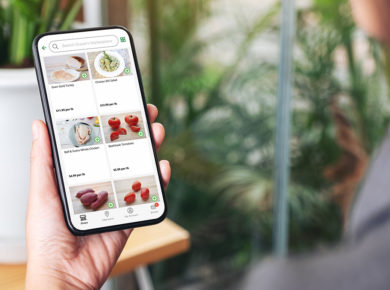Customer service is what will set your specialty food store apart from grocery giants like Walmart and Kroger. Personalized help and warm, welcoming customer service makes your business better than the competition, prompts customers to recommend you to family and friends, and makes buyers leave positive reviews. Most importantly, it’s what turns buyers into repeat customers, building loyalty.
How Do Customers Measure Their Satisfaction?
In order to measure your customer’s satisfaction with your store, you have to first understand how they’re measuring their own satisfaction. Here are a few of the most important factors customers take into account while measuring their satisfaction with your store:
Hygiene/Layout
No one wants to buy anything from a dirty or unclean store—especially not food. Frequent cleaning is important to how customers perceive your business. This doesn’t only include cleaning, mopping and sweeping, but making sure products are shelved neatly, organized logically and systematically, well lit and that there are clear aisle labels to help customers locate goods.
Customer Service
Having a readily available and knowledgeable staff to help customers is crucial.. Personable customer service is what sets your store apart from the chain grocer down the street. Your staff should be able to provide suggestions when customers ask for advice and engage with the customer to see what will best meet their needs. Building relationships with customers makes it more likely that they will return to your store or give you good online reviews (which has serious follow-on results).
Time
Your store should be open at the right times to bring in customers and check-out shouldn’t be too time-consuming. For starters, make sure your store hours are accommodating for your customer base. Pay attention to neighborhood demographics and culture (e.g. observance of religious holidays, etc). Additionally, no one wants to wait a long time to check-out after shopping. With the expansion of self-checkout and online shopping, customers expect a certain level of speed and convenience. Read more about changing customer expectations and what you can do to increase sales.
Product Quality
Your business sells high quality, organic, and fresh goods – make sure they look and taste that way! Customers will remember how crisp your vegetables were and how fresh your seafood tasted. Or rather, they are more likely to remember if something goes wrong, or is sub-standard. They’re also going to remember your unique products – the things they couldn’t find at the grocery giant. Pay attention to which of your products sells the most and ask customers what makes them keep coming back for it.
Online Presence
Your online presence matters to your customers, and online grocery shopping is growing faster now than ever before. “Online shopper numbers have been growing so fast that the FMI and Nielsen forecast that 70% of US shoppers could be buying groceries online by as early as 2022.” Mercato is the perfect way to get your specialty shop online. By joining the online marketplace, Mercato sets up an online storefront for your inventory and handles delivery options. Mercato assists you with every step and offers additional services, like advice on how to remain competitive against grocery giants and customizable options for your website that will take customers directly to your customized Mercato online storefront. Mercato also funds targeted advertising campaigns which can help their merchants acquire new customers through their shared platform.
Measuring customer satisfaction with your store
So now you know what customers consider when ranking their satisfaction. Below we also outline common metrics for customer satisfaction. How can you gather this information for your store?
Surveys
A very common and simple way to gauge your customer’s satisfaction is to send out a survey to them. If you email receipts to customers, you can attach a survey to the email and incentivize their response, perhaps with a discount for the next time (which also encourages a second visit).
Likewise, if you print receipts, include the survey link at the bottom of the receipt and make sure you cashier points it out to the customer. Make sure your survey includes CSAT questions as well as NSP questions (explained below) in order to better judge true customer satisfaction. If survey responses are extremely polarized, that isn’t uncommon. It is typical for only customers who had either an incredible experience or very poor experience to feel inclined to fill it out. Incentivization is one of the best ways to combat nonresponse error. Need help creating an effective survey? Check out these tips!
Happy or Not
Happy or Not Smiley Terminals can be placed in your store near the exit, designed for customers to rank their satisfaction with their experience on a scale of smiling faces. Happy or Not provides web and email analytics reports, has built-in misuse protection (to protect incorrect data as a result of someone pressing the buttons excessively), and can be accessed online 24/7. Happy is Not is convenient for customers because they can respond in seconds from the store, and is completely anonymous, which makes them more likely to be honest.
Read your Reviews
People leave online reviews for a reason. Make sure your customers know they are heard! This includes responding to feedback online, both negative and positive, and taking customer suggestions into account. Mercato allows you to respond to reviews left on their platform for free (which platforms like Yelp do not allow merchants to do).
Measuring customer satisfaction is an important way to determine how your business is doing overall, as well as finding out what improvements you can make. If you are unhappy with your customer satisfaction results, check out our post on improving customer satisfaction. It’s important to maximize your customer service as an independent merchant – it’s what sets you apart from the competition and keeps you competitive.
How You Can Measure Customer Satisfaction
CSAT Score
A CSAT, or customer satisfaction rating, is one of the most common ways to measure how satisfied your customers are. A CSAT score is calculated based on customer’s rating on a scale from 1-5, where a score of a 4 or 5 is considered satisfied, and everything below is not considered in the calculation.
Variations of a CSAT scale are very commonly used online and can be seen on platforms like Yelp and Google. One downside to CSAT scores, however, is that they measure satisfaction in the short-term. If a customer goes to your market and has a poor experience, they may record a low score, despite usually having a much better experience at your store. CSAT scores can be used to gauge general customer satisfaction, but can also be drilled down into more specific categories, like satisfaction with the check-out process, product selection, or telephone assistance.
Example CSAT survey question: “On a scale from 1-5, with 5 being extremely satisfied, how satisfied were you with today’s shopping experience?”
NPS Score
An NPS, or a Net Promoter Score, is another way to measure customer satisfaction. NPS scores are often seen as measuring customer loyalty rather than satisfaction, but they can still be a powerful tool. An NPS survey asks the consumer how likely they are to recommend your business to friends or family, which has them take into advantage the whole of your business, rather than a single experience. This scale is from 1-10 and a customer who gives a rating of 9 or 10 is considered a “promoter,” or someone who is enthusiastic about sharing your business and is likely to become a repeat customer.
Example NPS survey question: “On a scale from 1-10, with 10 being extremely likely, how likely are you to recommend our market to family or friends?”
ACSI Score
The ACSI, or American Customer Service Index, is a multi-equation econometric model for determining customer satisfaction. The measurement process includes taking the weighted values of customer expectations, perceived quality, and perceived value. The lighter blue bubbles are considered the “drivers” of customer satisfaction, which lead to the ACSI score. The ACSI score can then be used to determine the likelihood of customer complaints versus customer loyalty.







